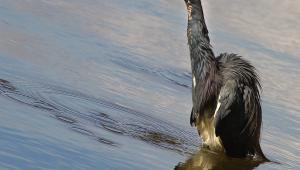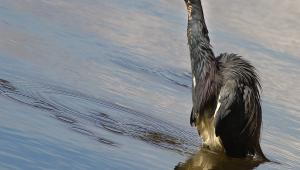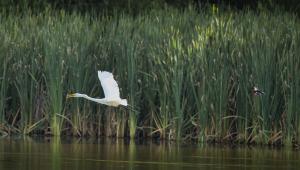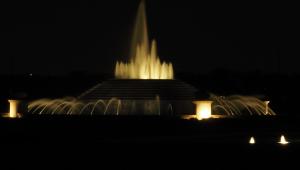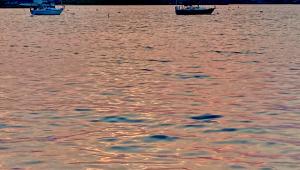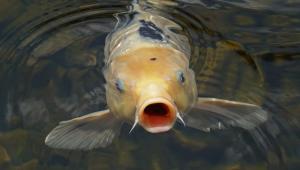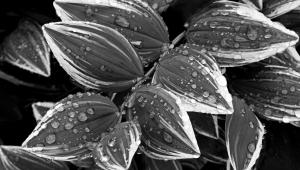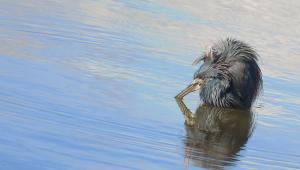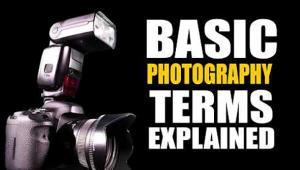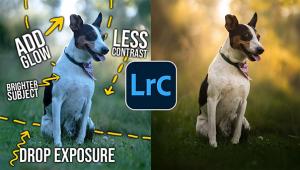Nikon CoolPix 5000
A Worthy Addition To The CoolPix Family
In December 2001, Nikon released their first prosumer 5 megapixel digital camera, the CoolPix 5000. Originally announced in September, this camera is a worthy successor to the immensely popular CoolPix line that includes Nikon's CoolPix 950, 990, and 995. Nikon has always had a loyal following of users, in part because early in the company's history the decision was made that backward compatibility of lenses and accessories was important. In keeping with that policy, most of the accessories from the previous CoolPix line (with a few exceptions) can be used with the new CoolPix 5000. The result is a large number of third party accessories and supplemental lenses that make it a fine working photographer's tool. (For a detailed review of accessories and lenses that work with the CoolPix series, check out our http://BermanGraphics.com web site.) Out Of The Box The LCD finder swivels, and is viewable from any position, even in sunlight, which makes it much more useable than the viewfinders on the previous CoolPix models. There is a hot shoe on the camera, a first in the CoolPix line. The camera ships with a 32MB CompactFlash card, which is an improvement over the 16MB and 8MB cards that are shipped with some digital cameras. Still, for a 5 megapixel camera 32MB is far too small a card. Lexar was kind enough to lend us a 512MB 12x card to use in working with the camera, which made it possible to spend the day shooting without having to change cards. |
|||
Control Placement Often the first sign that it was accidentally pushed was the long delay while the camera wrote TIFF files to the card. We'd like to see a firmware update to use two presses of the button within a certain time limit or maybe a rotation of the command wheel as a safety lock. The last thing you want to happen when shooting is to find out that those important pictures were saved at a much lower resolution than you intended. |
|||
Nikon Lenses In addition to its 28mm built-in lens, Nikon had given us a 19mm accessory lens, the WC-E68. We've been able to take some extraordinarily detailed pictures that show excellent sharpness, contrast, and flare control even when shooting into a sunset lit snow scene. This lens has been referred to as the interior photographer's dream lens. In addition to the new 19mm lens, Nikon designed an adapter so that the two telephotos (the TC-E2 and the TC-E3ED) and the fisheye (FC-E8) from the previous CoolPix models could be used. For both the telephotos, the lenses have almost no leeway in zooming and should be considered fixed focal length lenses. In fact, according to the manual, if you set the menu for the TC-E3ED, the camera will automatically be set to 1.2x digital zoom because there is a very slight vignetting when first placed on the camera. That would make the TC-E2 into a 170mm lens and the TC-E3ED into a 255mm lens or 306mm, taking into account the 1.2x factor. |
|||
Nikon Accessories And Adapters
The other accessory we recommend is the UR-E6, which adapts the threads on the body to 28mm for use of the two telephotos and fisheye. Both of these adapters are essentially tubes that surround the internal lens as it zooms. Additionally there is the lens hood HN-E5000 that is similarly shaped but slightly flared at the end so it doesn't vignette at the widest zoom setting. Another accessory that should prove to be quite useful wasn't available at the time of the review submission. The MB-E500 will be 6 AA battery pack that attaches to the camera as a grip. Nikon has apparently heeded the complaints of the users who preferred the (rechargeable) AAs, which are less expensive and easier to obtain when traveling. |
|||
After-Market Accessories Like most professional photographers, we prefer to use an Arca Swiss quick release system and have custom plates on all our camera bodies and long lenses. We were really impressed when Kirk Photo came out with quick release plates for the CoolPix 990 and 995, and now they have one for the CoolPix 5000. These plates only add about 1/4" of height to the cameras but make it much more conducive to use the camera on a tripod. They also sell adapters for all kinds of tripod heads if you're just starting out and don't want to purchase a large ball head. We should also mention that all their camera plates also have 1/4x20 female threads for a standard tripod head, so you're not limited to using the quick release feature. The EN-EL1 rechargeable battery is not known to have a long life and the alternative lithium battery can cost about $12. Therefore we were very pleased to find that the Maha PowerBank from Thomas Distributing now has a 7.2v model DPB-140LI for cameras like the CoolPix 5000. Flash Built-in flashes are quite limited in any event, so what you really want to use is the new Nikon SB-50 flash, a perfect match in size for the CoolPix 5000. One of its features is a wide angle diffuser that gives even coverage with the 19mm lens. In using the SB-50, the internal flash should be set for Auto and the SB-50 should be set for TTL so the on-camera photocell will control the output of the SB-50 for perfect exposure. We've been shooting with a CoolPix 990 in a studio situation for the past year and have looked forward to using the CoolPix 5000 in the same type of situation. The fact that the CoolPix 5000 will sync with external strobes gives it a chance to function as a real professional tool. We regularly use two SB-24s bounced into umbrellas for a portable studio. Since there is no sync socket on the CoolPix 5000 you have to use either the SC-17 to connect a Nikon flash or the AS-15 to connect a standard sync cord. We set up the two strobes, connecting one to the CoolPix 5000 through the SC-17 cord into the hot shoe and connecting the other with the SC-19 cord. Not all is perfect, however. The internal flash is supposed to be disabled when a flash is attached to the hot shoe. That does happen when using the SB-50 flash on-camera. But using the SB-24 through the SC-17 cord, the internal flash would still go off, affecting the exposure. The folks at Nikon are aware of this problem and are working on a fix. Our recommendation is a firmware update to separate the hot shoe and the internal flash in the menu, just like the sync socket and the internal flash are separated in the menu of our CoolPix 990. |
|||
Quality In our comparisons with the Nikon D1X, we were very impressed with how well it did. The D1X did have higher image quality, but not by as much as you might expect, considering the price difference. The CoolPix 5000's dynamic range was a bit less, and the D1X seemed to have a fuller tonal scale. Surprisingly, the LCD on the back of the CoolPix 5000 was noticeably better than the one on the D1X. In the end it is the photographer who makes the picture, not the camera. For us, evaluation of the CoolPix 5000 was about how the camera could or could not become an extension of our vision. Were we able to take the camera out into an unknown lighting situation and come back with pictures that have made people say "wow"? We've been able to come up with some outstanding, artistic images. We had set up a portfolio of CoolPix 990 images on our web site and have now added a portfolio of CoolPix 5000 images, some of which are published with this article. We welcome you to come back to the web site and judge for yourself. The CoolPix 5000 isn't a point-and-shoot camera, although it does fine in Program mode. Where it really shines is when you treat it as a creative tool. What it does for you is enable you to learn about photography and light. You can get great pictures with it if you think about how the camera is seeing the light. Isn't that what photography is all about, using light to define a time and place? We would compare the experience of working with the CoolPix 5000 to picking up a Leica for the first time after using an SLR for years. It brings you back to the basics of photography and teaches you to think all over again. And the resulting pictures can be very rewarding. Resources |






